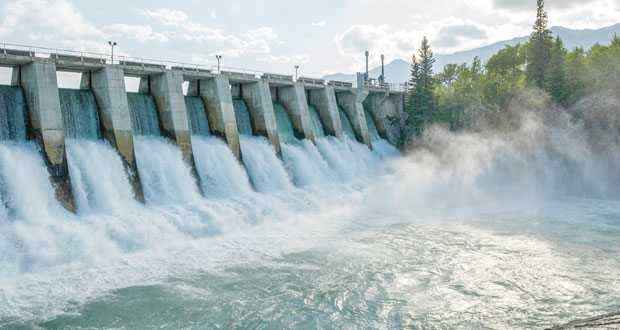 Louise Clarke from the Water and Public Health Engineering teams at the global engineering consulting and advisory practice Buro Happold provides insight into why we need to improve our water management and some of the best means of doing so
Louise Clarke from the Water and Public Health Engineering teams at the global engineering consulting and advisory practice Buro Happold provides insight into why we need to improve our water management and some of the best means of doing so
When we think of water management what typically comes to mind is how we use our water. However, facilities management is about so much more than just the how, requiring a wholly integrated approach that includes (but is not limited to) factors such as: the source of water; the quality of water needed for different uses; greywater (non-faecal contaminated) production sources; local rainwater and stormwater; flood water; condensation water; heating and cooling; drainage systems and public health.
WATER STRESS
In 2021, the Environment Agency reported that 16 of its 23 water regions are under water stress, a term for when the demand for water exceeds what’s available for an extended period. Twelve of these are classified as serious. Sadly this is not uncommon, with the UN reporting that half of the world’s population will face severe water stress by 2030.
Water neutrality, where a new development does not result in a net increase in water demand, is one way to combat water stress. The three general principles of achieving water neutrality are reduce consumption, reuse water and regenerate nature.
It’s often thought water neutrality is more suited to new developments, but there are endless opportunities to bring these principles into existing developments through collaborative planning and minor modifications. Here, we’ll outline just a few of the options that can improve both water usage and the overall sustainable management of water.
DEVELOP A WATER CONSERVATION PLAN
Developing a water conservation plan is a great way to minimise water wastage and promote responsible water use. Such a plan should clearly set out changes that can be implemented and how new technologies can be used, when considering the specific requirements such as the water source and water usage.
ALTERNATIVE WATER SOURCING
In the water world, we say that the water quality should be dictated by its prescribed use. However, the typical standard of water provided is potable (drinking water), which is of much higher quality than is necessary for many uses. For example, potable water is not required for activities such as toilet flushing, landscape irrigation and car washing. The water required for a development can be reduced significantly by evaluating the different sources of water and the water quality needed for use.
Similarly, not all used water needs to go into our sewers. There are ample opportunities to collect ‘grey water’, this is wastewater without faecal contamination, from places such as hand washing sinks, washing machines and showers. This can then be run through relatively low levels of treatment and reused. In a large residential building, for example, one third of shower water could be collected and reused to supply the toilet demands for the entire building.
Collection of rainwater, stormwater runoff harvesting, recycled water supply and harvesting condensation are also perfectly viable and proven alternatives to potable water.
Some of these options are more suited to new builds or for implementation during significant renovations, for example, internally plumbed greywater systems. However, some of the more ‘easy win’ opportunities include: external ablution facilities; installing tanks for rainwater collection; stormwater harvesting systems; air conditioner condensation collection; any detached grey water producing or consuming activity.
PRESSURE MANAGEMENT
Water supply pumps are used to transfer water from the mains supply to the point of use. Research on pump operation by pump manufacturer Grundfos found that on average, pumps operate at their peak capacity only 4.5 per cent of the time and operate at less than half of peak capacity for 86.4 per cent of the time. One way to improve this is by installing variable speed drives on pumps, automatically adjusting the pressure depending on the demands of the system. This both prevents excessive pressure at the taps or faucets and helps achieve up to a 30 per cent reduction in pumping costs.





